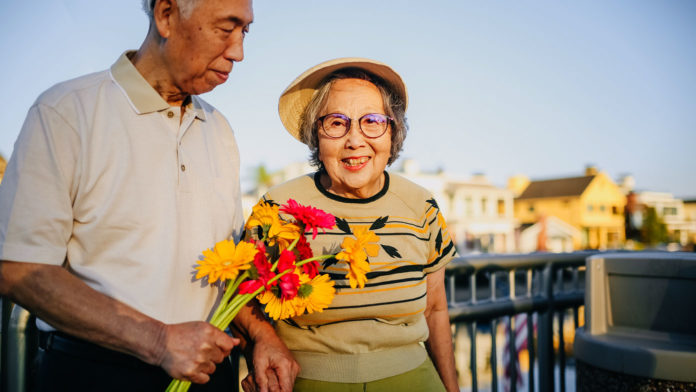For seniors living with dementia, symptoms go beyond memory loss. Falls are already the leading cause of injury for older Canadians, and that risk only increases for people with dementia.
Each year, 60 percent of seniors with dementia suffer a fall. That’s four to five times more often than seniors without cognitive impairment, and falls threaten their independence and even raise their risk of dying. Indeed, fall-related injuries account for 16 percent of their hospital admissions, and because cognitive impairment can interfere with their ability to communicate their symptoms, the warning signs are often missed.
Experts are now using computer vision to hone in on subtle changes in the way these seniors walk that can predict when a fall is likely to happen in the next few days or weeks. Knowing that physical symptoms are worsening can help prevent falls from happening.
It’s a main focus of research for scientists at the University Health Network’s KITE Research Institute like geriatric psychiatrist Andrea Iaboni and biomedical engineer Babak Taati, also an assistant professor at the University of Toronto.
But to establish a video-based monitoring system that wouldn’t require patients to remember to carry around a physical identification tag — a major barrier to implementation for people with dementia — Iaboni and Taati know that they first need to battle elements of ageism and ableism that are baked into existing facial recognition programs.
“Facial recognition technologies work well for young, healthy adults, but not as well for older adults with dementia, cerebral palsy and Parkinson’s,” said Taati in a press release.
At KITE, scientists are using artificial intelligence (AI) to build a video-based monitoring system called AMBIENT. For the pilot study, a video camera has been installed at the end of a hallway in the Specialized Dementia Unit. Each time someone walks by carrying a radio frequency ID tag, the camera is activated, and it films the patient’s movement as they walk through the hallway.
The software can then look at elements like the number of steps taken each second and smoothness of stride. Comparing against those same measurements taken days or weeks earlier, AMBIENT can track changes to steadiness and coordination that might predict a fall before it happens.
Based on preliminary results, AMBIENT can predict a fall within the next 30 days. With this in mind, healthcare providers can adjust medications or caregivers can enhance supervision to prevent an injury.
In future, the research team plans to use privacy-preserving machine learning techniques to improve facial recognition for older adults with dementia. This would allow AMBIENT to be deployed anywhere, with nothing more than a video camera.
Many long-term care homes already have surveillance cameras installed that could be used with AMBIENT. Roughly 70 percent of long-term care residents have dementia, and AMBIENT could help assess them for fall risk on a daily basis without adding the burden of comprehensive testing to residents or staff.
Similar analyses could ultimately extend to other health conditions, such as physical symptoms of pain or infection.
Training facial recognition to be more inclusive opens doors to using AI to help more patients. It’s a powerful tool that could improve quality of life without being obtrusive. Residents and patients simply carry on with their regular activities.
There are large gaps in long-term care that need to be addressed to protect our elders. Technology like AMBIENT can help recognize early symptoms, allowing us to take action and ensure a higher level of care.




































